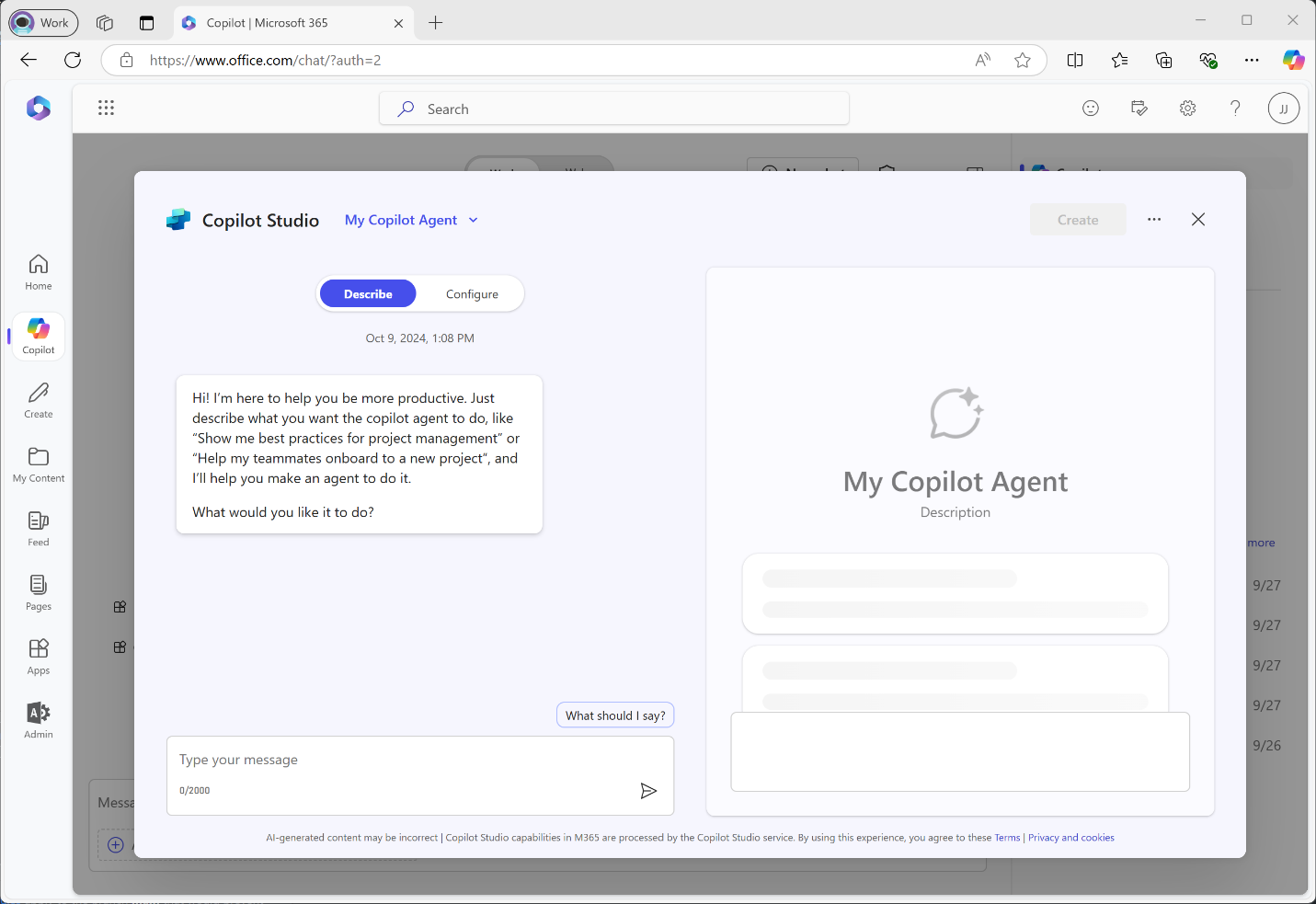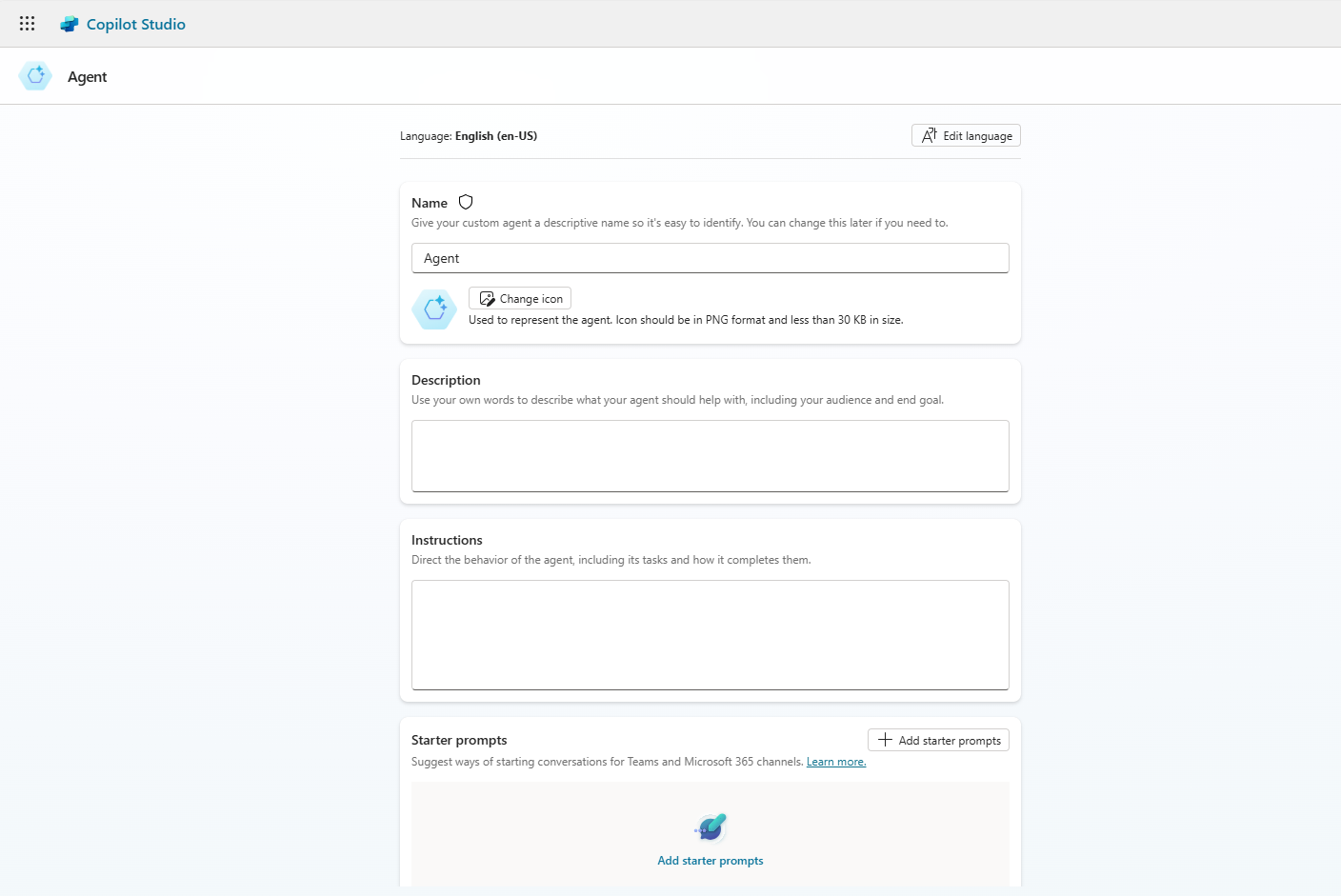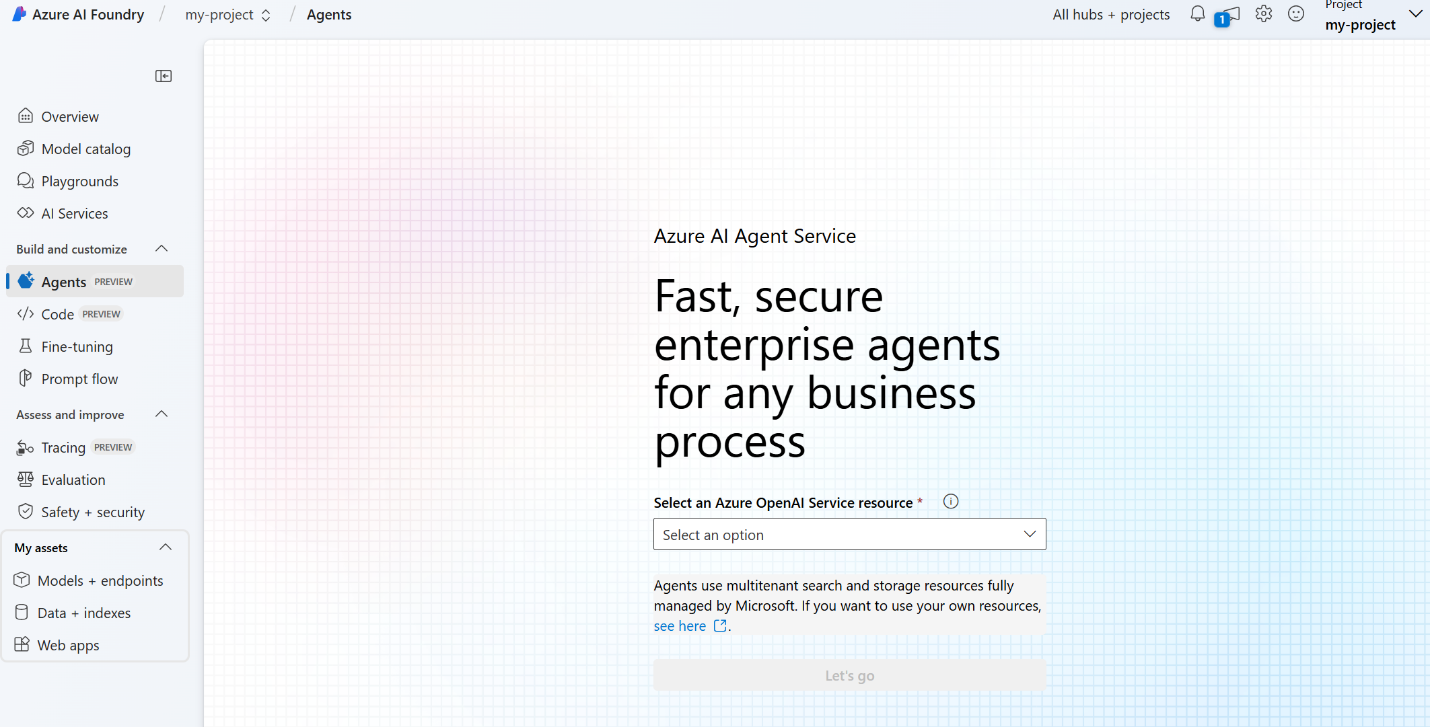Microsoft AI Agents Demystified
Table of Contents
Deciding which Microsoft AI agent tool to use can feel overwhelming. With multiple options available—from no-code solutions to developer platforms—organizations need to understand what sets each tool apart. This breakdown cuts through the complexity to help you choose the right tool for your needs
Understanding AI Agents vs. Copilot
Before diving into specific tools, it’s important to understand the fundamental difference between Copilot and Agents:
- Copilot: Works as your personal assistant, focused on human augmentation. There are only as many Copilots as there are people. One Copilot for every person.
- Agents: Expert systems that can work autonomously on behalf of a process or company. There are more agents than people. Many agents for each person.
The Spectrum of Agents
Microsoft’s agents vary in levels of complexity and capabilities:
- Simple (Retrieval): Retrieve information from grounding data, reason, summarize, and answer user questions. These are generally available.
- Task: Take actions when asked, automate workflows, and replace repetitive tasks for users. These are generally available.
- Advanced (Autonomous): Operate independently, dynamically plan, orchestrate other agents, learn and escalate. These are currently in preview.
The Two Paths to AI Agents
These fundamentals affect everything from development time to user experience.
Path 1: Microsoft 365 Copilot Extension
Think of this as adding AI capabilities to your existing Microsoft 365 environment. It’s like upgrading your current tools rather than building something new.
Best for:
- Internal team use
- Quick implementation
- Seamless Microsoft 365 integration
- Immediate access to business data
Key Benefits:
- Familiar interface reduces learning curve
- Built-in security and compliance
- Access to advanced GPT-4 capabilities
- Automatic updates and improvements
Path 2: Custom Agent Development
This is building your own AI assistant from the ground up. Think of it as creating a specialized tool rather than enhancing existing ones.
Best for:
- Public-facing applications
- Highly specialized workflows
- Maximum customization
- Multi-channel deployment
Key Benefits:
- Complete control over the user experience
- Integration with any system or database
- Customizable AI model selection
- Flexible deployment options
Breaking Down Your Tool Options
Just as electricity required a complex infrastructure from power plants to transmission lines before enabling widespread innovation, AI follows a similar pattern. Understanding this “technology stack” reveals both challenges and opportunities at different levels.
Agent Builder

The No-Code Solution for End Users
- Lives inside Microsoft 365 Copilot
- Cost: Included in M365 Copilot ($30/user/month)
- Perfect for: Business users who need quick results
Key Features:
- Natural language instructions
- Direct SharePoint integration
- Built-in security controls
- Quick deployment capabilities
Illustrative Example: An HR team uses Agent Builder to create a policy assistant that answers employee questions using their SharePoint documentation—up and running in just one afternoon. The assistant handles over 200 queries daily to reduce HR email volume by 40%.
Copilot Studio

The Low-Code Powerhouse for Makers
- Part of Power Platform
- Requires separate license
- Perfect for: Tech-savvy business users and citizen developers
Key Features:
- Visual workflow designer
- Custom data connections
- Advanced conversation design
- Analytics and monitoring
- Multiple deployment options to meet users where they are
Capabilities by Agent Type:
1. Retrieval Agents
- Follow maker instructions
- React to triggers automatically
- Takes action using your data and knowledge
- Generate responses to user queries
Example: Product support agent that provides step-by-step instructions based on error codes
2. Task Agents
- Follow maker instructions
- React to triggers from platforms like Microsoft Teams
- Connect to systems like company websites and databases
Example: HR assistant that answers questions and performs tasks like checking vacation balances
3. Autonomous Agents (Preview)
- Independently begin work based on autonomous triggers
- Automate long-running processes
- Dynamically reason over capabilities
- Learn and improve
- Follow human guardrails and ask for help when needed
Example: Engagement staffing agent that evaluates client requests, assigns partners, and notifies stakeholders
Illustrative Example: A travel department builds a comprehensive trip planning assistant that connects to multiple systems and handles everything from bookings to expense policies. The assistant processes over 1,000 travel requests monthly, saving an estimated 20 hours per week in manual processing.
Azure AI Foundry

The Developer’s Choice
- Formerly Azure AI Studio
- Full code control
- Perfect for: Development teams building sophisticated solutions
Key Features:
- Custom model deployment
- Advanced orchestration
- Full API access
- Scalable architecture
Illustrative Example: An enterprise builds a customer service AI that integrates with their CRM, knowledge base, and multiple communication channels. The system handles 60% of initial customer inquiries automatically, improving response times by 75%.
Copilot vs. Copilot Chat: Finding the Right Fit
Instead of a complex table, here’s what you really need to know. Remember, it doesn’t have to be an either/or decision. You can start small with a pilot rollout of Microsoft 365 Copilot licenses, while simultaneously enabling broader organizational use of Microsoft 365 Copilot Chat. This flexible approach helps organizations balance deeper integration with wider accessibility to meet both immediate and exploratory needs.
Microsoft 365 Copilot Chat (Free + Pay-as-you-go)
- Start with web data
- Pay only when connecting to company data
- Perfect for testing the waters
- Basic security controls
- Ideal for departmental pilots
Microsoft 365 Copilot ($30/user/month)
- Access to everything: Your Teams, emails, documents, and more
- Deep integration with Microsoft 365 apps
- Built for serious business use
- Advanced enterprise controls and analytics
- Comprehensive security features
Tailoring Agents to Your Unique Needs
The complete agent creation process involves four key steps:
1. Trigger: Tell your agents when to act
a. When a record is modified in CRM
b. When a new email arrives in Office 365 Outlook
c. When an item is created in SharePoint
d. When a new hire starts in HR Management
e. On a schedule
2. Instruction: Design your agents’ behavior
a. Natural language
b. Pre-built templates
c. Visual canvas
d. Code
3. Plan: Connect your agents to knowledge and applications
a. Microsoft Graph (Productivity data in M365)
b. Microsoft Dataverse (Business data)
c. Data connectors (External systems)
d. Microsoft Fabric (Analytics)
e. Your own data
4. Outcome: Deploy agents to your channels
a. Microsoft Teams
b. Website
c. Mobile app
d. Email
e. And more
Want to dig deeper into how it all works?
Explore our behind-the-scenes breakdown of Copilot’s architecture and intelligence.
👉How Copilot Works Behind the Scenes
Making It Work: Implementation Strategies
Start Small, Think Big
Launching AI across your organization doesn’t need to happen all at once. Start with focused use cases like Copilot Chat to build early momentum, then scale your approach as adoption and value grow.
- Begin with Copilot Chat for quick wins
- Pilot with specific teams
- Scale what works
- Add custom agents as needed
Prepare Your Foundation
Strong foundations make for strong AI outcomes. Organizing your data, cleaning up content repositories, and establishing governance up front will help your agents perform accurately and securely.
- Clean up your SharePoint
- Organize documents logically
- Update metadata consistently
- Remove outdated content
- Tag your content
- Use consistent naming conventions
- Apply relevant categories
- Add descriptive summaries
- Set clear ownership
- Assign content owners
- Define update schedules
- Document maintenance procedures
- Define security boundaries
- Set access controls
- Monitor usage patterns
- Implement data governance
Points of Caution
AI agents are only as effective as the guardrails around them. Address security, compliance, and user readiness proactively to reduce risks and maintain long-term success.
- Data access controls
- Regular security audits
- Permission reviews
- Data classification
- User training needs
- Initial onboarding
- Ongoing education
- Best practice sharing
- Content maintenance
- Regular updates
- Quality checks
- Version control
- Security compliance
- Industry regulations
- Data privacy
- Audit requirements
AI Transformation Journey
Your AI journey can be structured in three phases:
1. Empower: Begin your AI transformation
a. Empower users with a new technology
b. Start with Microsoft 365 Copilot
2. Innovate: Apply new technology to existing problems
a. Enable every function and department
b. Optimize existing business processes
c. Leverage Copilot Studio
3. Modernize: Apply new technology to new problems
a. Unlock new business value
b. Implement Copilot + Agents with Copilot Studio
c. Use Azure AI Foundry to build custom, scalable AI solutions for the most advanced needs
d. Extend across Finance, Marketing, Legal, HR, Customer Service, and Sales
Quick Decision Guide
Ask yourself these questions:
- Just starting out? → Microsoft 365 Copilot Chat
- Need it fast? → Agent Builder
- Want more control? → Copilot Studio
- Building something complex? → Azure AI Foundry
Factors to Consider:
- Development timeline – Understand how quickly you need to deploy and what timelines each solution requires.
- Technical expertise available – Evaluate the skill sets on your team to determine if you need no-code, low-code, or full-code tools.
- Budget constraints – Factor in licensing, development, and long-term maintenance costs.
- Integration requirements – Consider how well the solution will connect with your existing systems and data sources.
- Scalability needs – Ensure the tool can grow with your organization as adoption increases.
- Security requirements – Prioritize tools that meet your organization’s compliance, privacy, and data protection standards.
Next Steps
1. Start Small
a. Pick one use case
b. Choose your tool
c. Run a pilot
d. Measure results
2. Scale Smart
a. Document what works
b. Train your teams
c. Expand gradually
d. Keep improving
3. Optimize Performance
a. Monitor usage patterns
b. Gather user feedback
c. Refine responses
d. Update content regularly
The Bottom Line
Microsoft’s AI agent tools aren’t one-size-fits-all and they’re not meant to be. Whether you’re extending Microsoft 365 Copilot or building custom agents, success comes from matching the right tool to your specific needs. Start small, learn what works, and scale from there.
The key to success is understanding that AI agents are evolving solutions that grow with your organization. By choosing the right platform and following a structured implementation approach, you can create AI agents that truly transform how your business operates.
Need hands-on experience? Begin with Microsoft 365 Copilot Chat. It’s free to start, and you’ll quickly understand what AI agents can do for your business. The journey to AI-powered productivity starts with a single step—make sure it’s in the right direction.
Ready to Take the Next Step?
With Microsoft expanding AI Agent capabilities across Copilot, it’s easy to feel overwhelmed by the options. Our Copilot AI Agent Briefing simplifies the complexity. We’ll walk you through the landscape, highlight where AI Agents can drive the most value in your organization, and help you build a practical path forward.
Schedule your Copilot AI Agent Briefing to learn how Lantern can help you implement AI Agents effectively across your organization.
